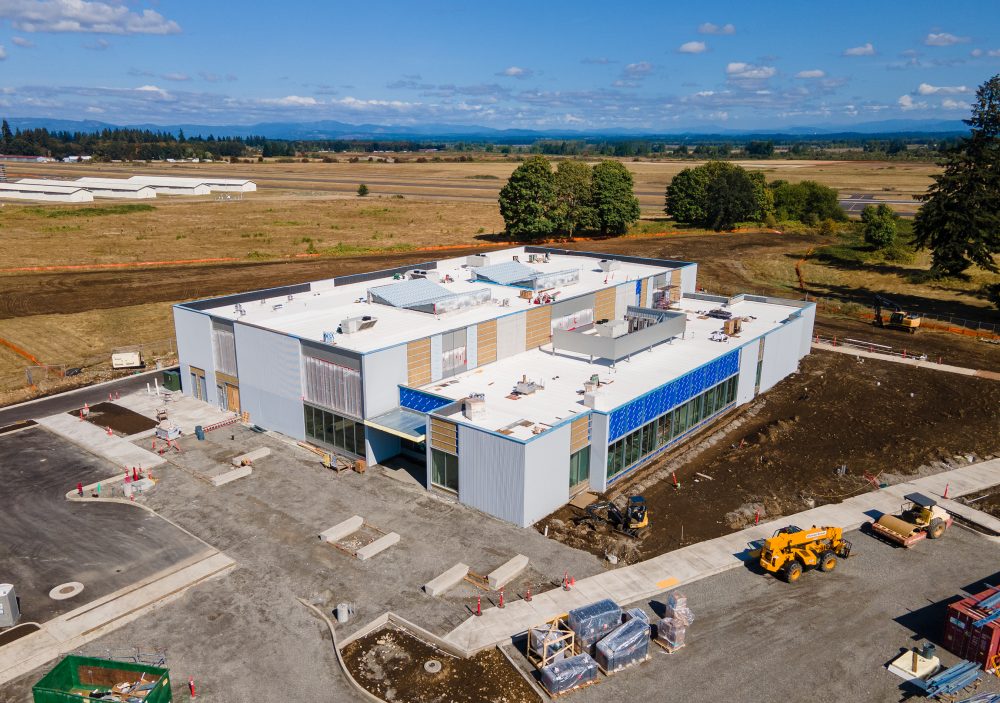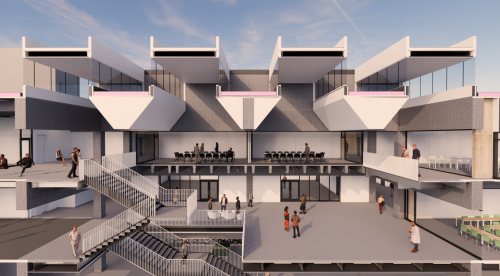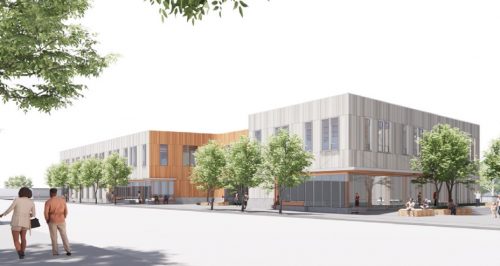This content was published: October 22, 2020. Phone numbers, email addresses, and other information may have changed.
PCC focuses on facilities planning to create more equitable spaces, strengthen design standards
Photos and story by Katherine Miller
As educational institutions around the world navigate the current challenges of the coronavirus, PCC continues to work toward a better and stronger future for its students and the community through a wide-ranging and in-depth facilities planning effort.
Since 2016, the college and its office of Planning & Capital Construction (P&CC) have been involved in long-range facilities planning that will provide a framework for assessing PCC’s built environment and linking future capital and maintenance needs with strategic and academic goals, including:
- Supporting the college mission of equitable student success;
- Informing accreditation reporting;
- Helping determine the allocation of resources;
- Developing design standards district-wide.
Rebecca Ocken, P&CC’s planning manager, said that the impact of this work will be felt by students, faculty, staff and community throughout the district.
“The physical spaces that our students, faculty and staff experience have a big impact on their success, as well as their comfort, ease and sense of belonging,” said Ocken. “Everything from the classroom environment, computers, common areas and even the parking are integral to the achievement and well-being of our community.”
Because of the vast amount of data to be collected during facilities planning, the work was split into two phases. Phase I was an assessment of existing conditions. Eight work groups made up of internal staff and external consultants were created to look at several disciplines, including classroom usage, mechanical and electrical building systems, transportation and safety needs, accessibility, and information technology.
The college shared the extensive findings with an internal steering committee that was supported by a project management task force. That data is actively finding its way into a variety of specific building analysis studies and has defined the scope of work for multiple deferred maintenance projects of the 2017 bond.
Phase II, which began in 2019, is expanding on the assessments completed in Phase I and is expected to be completed next year. The latest work includes holding visioning exercises for each of PCC’s four campuses and eight centers to help determine growth and development capacity in conjunction with academic programming needs. (Current covid-related restrictions may require visioning work to be completed virtually.)
For this second phase, PCC hired a team of consultants from Walker|Macy to study campus planning, urban design, architecture, landscape architecture, transportation, economics, demographics and real estate. Other disciplines may supplement these.
Throughout both planning phases these efforts are guided by the tenets of Critical Race Theory (CRT) and spatial theory, which hold that space is not neutral and that racism is ingrained in everything, including the built environment. As part of the 2017 bond program, the two largest capital projects — the renovation of Sylvania’s Health Technology Building and the construction of the new Portland Metropolitan Workforce Training Center — are exploring different ways to achieve greater diversity, equity and inclusion and are focusing on process.
“PCC is working to better understand the perspectives of our students of color to help achieve a more welcoming and comfortable environment,” said Ocken. “We are exploring new methods of inquiry in our design processes, conducting CRT trainings for our design and construction teams, and seeking more inclusivity in our outreach and engagement plans.”
PCC is also using the lens of sustainability throughout the facilities planning process to consider possible pathways with capital improvements that help the college support its 2020 Climate Action Plan.
“With both new construction as well as remodeling work, we want to move the college toward carbon neutrality,” said Ocken. “Those projects include everything from installing a photovoltaic array on the roof of the HT Building at Sylvania to the replacement of boilers at Rock Creek’s Building 2.”
The lack of affordable housing — a challenge confronting many college students in the Northwest — is another important component of PCC’s planning efforts. While the college continues to evaluate the options for creating housing at some of its locations, it has moved ahead with leasing land at its Portland Metropolitan Workforce Training Center site to Home Forward, which will build, own and operate an affordable housing development on the property. Home Forward, an independent government agency that is the largest provider of affordable housing in Oregon, is expected to offer 90 to 95 apartments ranging in size from studios to three bedrooms.
Home Forward will lease ground-floor space in the new building to a provider that can bring in a number of on-site services to support the needs of PCC clients and residents.
To support its planning efforts, the college’s P&CC office in partnership with its Facilities Management Services this year completed updating the Design and Construction Standards for PCC. The standards comprise a set of requirements that will guide current and future PCC development — both new and remodeled — and create a level of consistency across all projects.
The P&CC office is also involved in other important planning efforts, such as the Strategic Planning Steering Committee, the Accessibility Council and the Climate Action Plan Task Force. Outside of the college, Ocken and P&CC director Linda Degman participate in several other planning initiatives, including the Southwest Corridor Light Rail Project, Metro’s Regional Strategy Committee, the City of Portland’s Comprehensive Plan Update and the Southwest Equity Coalition.



